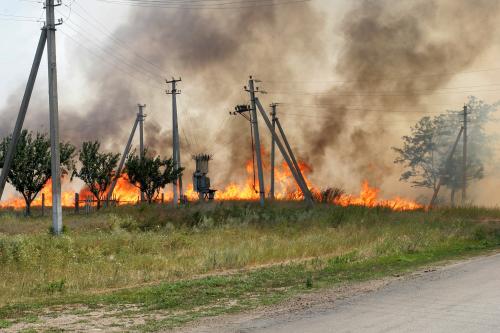Introduction
Addressing the Human Rights Gap in Disaster Relief
Natural disasters are the consequences of events triggered by natural hazards that overwhelm local response capacity and seriously affect the social and economic development of a region. Traditionally, natural disasters have been seen as situations that create challenges and problems mainly of a humanitarian nature. However, increasingly, it has come to be recognized, that human rights protection also needs to be provided in these contexts.
The tsunamis, hurricanes and earthquakes, which hit parts of Asia and the Americas in 2004/2005, highlighted the need to be attentive to the multiple human rights challenges victims of such disasters may face. All too often the human rights of disaster victims are not sufficiently taken into account. Unequal access to assistance, discrimination in aid provision, enforced relocation, sexual and gender-based violence, loss of documentation, recruitment of children into fighting forces, unsafe or involuntary return or resettlement, and issues of property restitution are just some of the problems that are often encountered by those affected by the consequences of natural disasters.
In addition, a high number of persons also become internally displaced when volcanic eruptions, tsunamis, floods, drought, landslides, or earthquakes destroy houses and shelter, forcing affected populations to leave their homes or places of residence. Experience has shown that the longer the displacement lasts, the greater the risk of human rights violations. In particular, discrimination and violations of economic, social and cultural rights tend to become more systemic over time.
Often the human rights violations are not intended or planned. Sometimes they result from insufficient resources and capacities to prepare and respond to the consequences of the disasters. More often, they are the result of inappropriate policies, neglect or oversight. These violations could be avoided if both national and international actors took the relevant human rights guarantees into account from the beginning. Missions and evaluations by the Representative of the UN Secretary-General (RSG) on the human rights of internally displaced persons show that not only national authorities are often unaware of the relevance of human rights norms in the context of natural disasters. International agencies and non-governmental organisations (NGOs) are also at a loss as to how to incorporate a human rights-based approach into emergency relief and response, even though many of the laws and codes of conduct applicable in situations of natural disaster include such guarantees.
Human rights have to be the legal underpinning of all humanitarian work pertaining to natural disasters. There is no other legal framework to guide such activities, especially in areas where there is no armed conflict. If humanitarian assistance is not based on a human rights framework, there is a risk that the focus will be too narrow and the basic needs of the victims will not be integrated into a holistic planning process. There is also the risk that factors important for recovery and reconstruction will be overlooked. Furthermore, neglecting the human rights of those affected by natural disasters means overlooking the fact that such people do not live in a legal vacuum, but in countries with laws, rules and institutions that should protect their rights. International human rights principles should guide disaster risk management, including pre-disaster mitigation and preparedness measures, emergency relief and rehabilitation, and reconstruction efforts. Those at risk need to be protected against violence and abuse. Those displaced need to be provided with protection and assistance and need to be able either to return in safety and in dignity to their original lands and property, or to be assisted to integrate locally int he area to which they have fled or to settle elsewhere in the country. Adherence to international human rights standards will help to ensure that the basic needs of victims or beneficiaries are met. The challenge often is how to apply these rules in an operational context.
In order to provide guidance on how to protect the rights of individuals affected by natural disasters, in June 2006, the UN Inter-Agency Standing Committee (IASC) adopted Operational Guidelines on Human Rights and Natural Disasters. These guidelines were needed because already existing guidelines on humanitarian action in emergencies, as well as standards for protecting human rights in armed conflict, did not deal specifically with human rights concerns emanating from natural disasters. The Guidelines are addressed to intergovernmental and non-governmental humanitarian actors. They focus on what humanitarian actors should do in order to implement a human rights-based approach to humanitarian action in the context of natural disasters. Complementing the Guidelines is this Manual, which provides the human rights background underpinning the Guidelines and lists practical operational steps to provide humanitarian workers with examples of how the Guidelines can best be implemented.


